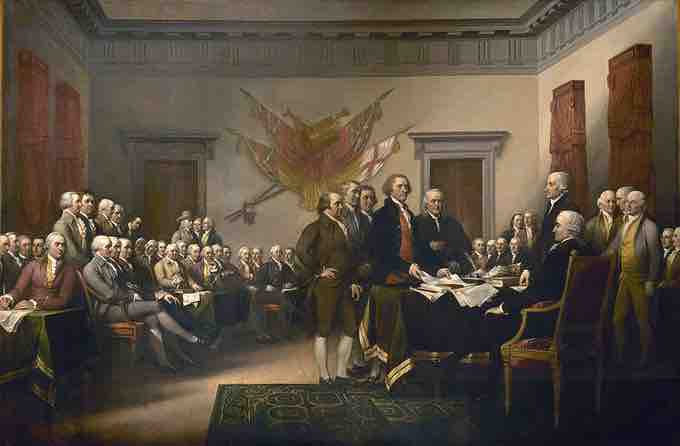The Second Continental Congress
The Second Continental Congress was a convention of delegates from the 13 colonies that formed in Philadelphia in May 1775, soon after the launch of the American Revolutionary War. It succeeded the First Continental Congress, which met between September and October of 1774.
The First Continental Congress petitioned King George III to repeal the Intolerable Acts (punitive measures passed by Parliament in response to the Boston Tea Party) and initiated a boycott of British goods. The First Congress established that the Second Continental Congress would convene on May 10, 1775.
Many of the same 56 delegates present at the First Continental Congress were in attendance at the Second Congress. The delegates reappointed former Continental Congress president, Peyton Randolph; and secretary, Charles Thomson, to reprise their roles at the Second Congress. Randolph was soon called away by other duties and succeeded by John Hancock as president. Other notable members of the Congress included Thomas Jefferson, Benjamin Franklin, and John Adams.
By the time the Second Continental Congress met, the American Revolutionary War was already underway. For the first few months of this conflict, the Patriots had carried on their struggle in an ad-hoc and uncoordinated manner. At this point, Congress intervened and assumed leadership of the war effort.
On June 14, 1775, Congress voted to create the Continental Army from Boston militia units. Congressman George Washington of Virginia was appointed commanding general of the army. On July 6, 1775, Congress approved a Declaration of Causes outlining the rationale and necessity for taking up arms in the 13 colonies. On July 8, Congress extended the Olive Branch Petition to the British Crown as a final, unsuccessful attempt at reconciliation.
The Congress assumed all the functions of a national government, such as appointing ambassadors, signing treaties, raising armies, appointing generals, obtaining loans from Europe, and disbursing funds. In the meantime, the Second Continental Congress tried to lead the new country through the war with borrowed funds and no authority to levy taxes. The Congress relied on money, supplies, and troops from the states to support the war effort; however, individual states frequently ignored requests for support.
In September 1777, the Continental Congress was forced to relocate to York, Pennsylvania, as British troops occupied the city of Philadelphia.

Declaration of Independence by John Trumbull, 1819
The resolution for independence was among the most important accomplishments of the Second Continental Congress.